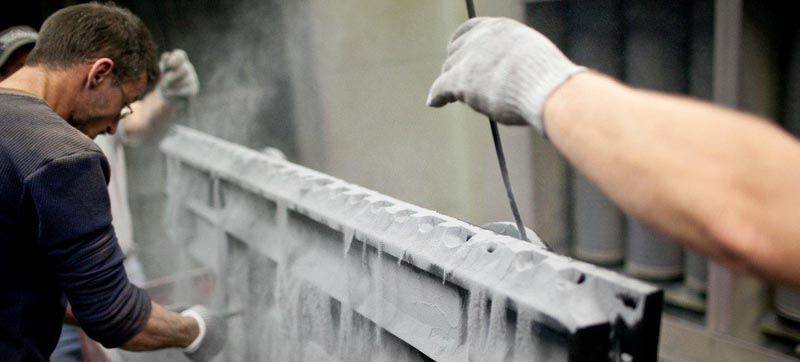Posted by admin , on Jun, 2015

Electroless deposition is considered to be a very simple process in the industry. It is used to achieve unstructured metallic coatings that exhibit uniformity in terms of their thickness. Instead of using electricity – such as is employed in nickel electroplating, chemical deposition is employed instead. Electroless disposition, including electroless nickel plating, can be used as coatings on both metallic and non-metallic substrates.
Defining Electroless Nickel Plating
Electroless nickel plating may be referred to as chemical or autocatalytic nickel plating. During the process, a metal coating is applied used chemical deposition. Mainly, the electroless plating solution consists of the following ingredients:
* Source metal (customarily salt)
* Reducer
* Complexing agent – this keeps the metal in solution
* Buffers also to other chemicals – for maintenance of bath stability, as well as to help increase bath life
The actual electroless nickel coating is a thick alloy featuring both nickel and phosphorus.
Advantages of Electroless Nickel Plating
Electroless nickel plating exhibits several advantages to the industries that employ it. They find it highly employable for many reasons including the following:
* The process allows the avoidance of requiring any intricate jig and anode arrangements
* The system has the ability to provide a coating that never fails to be uniform across the component
* Electroless nickel plating often creates results that can avoid any instances of further machining
Many industries also recognize the ability of electroless nickel plating to provide the basis metal with several characteristics including:
* Resistance to corrosion
* Resistance to wear as well as various forms of abrasion
* The ability to build-up a worn area of the basis metal
* Increased resistance to and reduction of friction (lubricity)
* Greater ease for soldering purposes
* Better performance at high temperatures
* Protection in the presence of various types of chemicals
These characteristics are adjusted to the needs of the particular performance levels. Another significant influence on the levels of such things as hardness and corrosion resistance is the type of alloy. The coating, for example, may range from a little nickel phosphorous coating on up to a high nickel phosphorous coating or even a nickel boron coating.
Electroless nickel plating is capable of increasing the qualities and life expectancy of metal and non-metal parts. The process is capable of making almost any metal more durable and anti-corrosive. When you employ electroless nickel plating, it is not only new materials that gain – you can even breathe new life into old parts, restoring components and reducing the need to buy new.


